13 Nature as the Compass of the Heart: A Poetic Autobiography
Liam Nigro
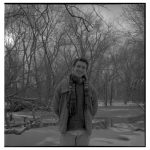
Hello there, my name is Liam! I find joy outside of the classroom by running and biking along the muddy and rushing Olentangy River, strumming guitars and howling at the moon on low-lit porches with my friends, and too frequently picking up new hobbies like being a radio-host, gardening, book-making, and cooking from all of the interesting people I cross paths with on campus…read more.
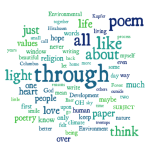
“Grown-ups love figures. When you tell them that you have made a new friend, they never ask you any essential matters. They never say to you, “What does his voice sound like? What games does he love the best? Does he collect butterflies?” Instead, they demand: “How old is he? How many brothers does he have? How much does he weigh? How much money does his father make? Only from these figures do they think they have learned anything about him”
– Antoine de Saint-Exupéry, “The Little Prince”
Words are, in my not-so-humble opinion, our most inexhaustible source of magic. Capable of both inflicting injury, and remedying it.”
– Albus Dumbledore (J. K. Rowling), “Harry Potter and The Deathly Hallows”
“Ocean. Ocean, get up. The most beautiful part of your body is where it’s headed.
– Ocean Vuong, “Someday I’ll Love Ocean Vuong”
Dear Reader,
How shall you live today?
Will you watch the sunrise? The sunset? Will you drive your car with the windows down, sticking your hand out the window to catch the fresh air passing through your outstretched fingers? Maybe cook a meal with a friend in a kitchen filled with delicious smells and sounds? Or will you call a loved one? Hear their voices, their stories.
The genesis of meaningful self-expression through writing came into my life through the wise words of an environmental literature professor stating, “Writing is the bravest activity, and you should face your doubts and insecurities and just write. Write in a journal, write poetry, write letters to people you care about – just write and face your vulnerabilities. In the process you might just connect deeply with others”[1] – Dr. Debra Rosenthal, John Carroll University.
I find myself drawn to poetry simply because the craft elevates my soul. In this sense, language connects me to the oneness of the human experience, guides my attention to find the magic of each day, and whets my curiosity. As a right-brained person, poetry is an effective vehicle for me to better understand and articulate concepts I learn in class. This stylistic form provides a personal window to translate my feelings, thoughts, and emotions creatively, which can be lost in stricter academic writing and standardized testing.
My interest in how poetry can address our climate reality stems from experience and frustration with current methods of communication and persuasion which are only displayed by data, charts, and honestly, arguments that lack heart. On account of this discontentment, I was especially drawn to Richard Baer’s paper, Our Need to Control: Implications for Environmental Education, which underlines the imbalance of control-oriented policy in The United States which has belittled or simply ignores ethical, religious, and aesthetic dimensions of existence – those having to do with quality and value (Baer, 474)[2]. Continuing, Baer states, “Much of life can only be fully understood through myth, symbol, analogy, metaphor, and other tools of a poet” (Baer, 475). By recognizing the intrinsic need to have a balanced foundation between science and arts in sustainable development, Baer illuminates how the humanities can better connect with human’s internal values for why our species currently demands an unnatural amount of natural resources. In doing so, this reconciliation of values could be a pathway towards healing the ecological crisis.
Through this portfolio, I hope to contribute to the agency of the humanities to revise sustainable development by bonding the qualitative to the quantitative. Below, I present four poems that speak to the intersection of personal experience and the systems of environment and religion, followed by four expansions that delve into how these works relate to the course material of Religion and Environmental Values in America.
I am grateful for your time as a reader!
Liam Nigro

Poem #1
STARDUST, FIRE-FLAKES, & ORANGE PEELS
If my childhood was a poem it would dive into a murky blue lake / headfirst
bubbles bursting the bathtub’s rim / mile-wide smile on that dark-haired talkative boy
“WOW, he has so much hair!” My dad didn’t just give me these locks but emblazoned
a 7am work-ethic & a neatly polished ring engraved with Success with God
that shined so brightly against my tight blue polka dot tie that rested above a heart
he told me was on fire / I have never seen strength & courage like his but I have never
seen hands so beautiful as the paint-covered motherly palms that held mine
as we walked our Sunday service of collecting fine hosts of beach glass from Lake Erie
EVEN if the love my mom and dad found in the desert never made its way to Ohio
together / they taught me how to wear a heart on my sleeve, to hoist my head up high
EVEN if my nose poked inside pages stained with heroes & magic for so many years
when it was not running around white-lined grass fields kicking a ball towards a goal
what was my goal? Obey that God dude in the sky, maybe one day Hallie will like me
Now it’s time for Saturday skateboard sizzlin’ down sun-soaked suburban streets
Riding into the sun if my childhood was a poem
December 5th, 2021 / Columbus, OH
Expansion on Poem #1
ON “STARDUST, FIRE-FLAKES, & ORANGE PEELS”
The course of Religion and Environmental Values in America (ENR3470) is about how we tell stories as much as it is about any other subject. How does one navigate a conversation or debate over an emotionally weighted and identity-intertwined spectrum of topics such as environment, religion, politics, values, economics, and climate change, especially in a dualistic political landscape like The United States. In Michael Pollan’s book “Second Home,” Pollan lays out a wonderful narrative schematic for discussing the aforementioned subjects[3]. Pollan draws on a timeless means of communication by articulating his life’s path and recognizing our perspectives are shaped by the cultural narratives we are molded by as a child. In this rhetorical sense, speakers or writers have the ability to connect with their audience through an open and honest window to the formation of their beliefs. In addition, the transparency on the basis of the author’s opinions opens the ability for the ideas to be challenged, discussed, and revised in the future. As a result of this humility, audience members are more inclined to engage with controversial subject matter. With the complex systems this course focuses on, Pollan’s use of the personal narrative unveils a powerful avenue to bring people of diverse values and beliefs together through the shared ceiling of their lived experience. Moreover, “Stardust, Fire Flakes, Orange Peels,” is the narrative of my childhood, hinting at the people, places, feelings, and sounds that carved my relationship with religion and the environment.
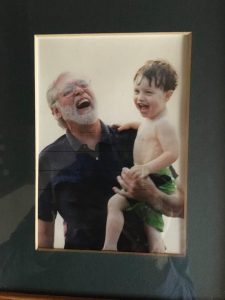
Poem #2
I AM NOT SURE IF I BELIEVE IN DESTINY
BUT I DO BELIEVE I FELT SOME SORT OF GODLY PRESENCE
THAT DAY IN NOVEMBER
Destiny / God
took the shape of a winged creature
Part-human / Part Divine
as it crawled out of my womb-like-mouth
golden feathered wings expanding on my tongue
the angelic being reached deep into the cavity of my chest
Taking my heart, trembling red in its beak black
And with a great “WHOOSH” the demigod took to the sky
My words pulsing red upon its jeweled wings
And I was left with the feeling
of
/ warmth /
flowing
To the tips of my wavering fingers
To the boulder they were touching
To the people behind the boulder
To the forest behind the people
To all things behind the forest
Till the warmth came back to me
Sitting awestruck and electric in the earthen bed
For the rock has been rolled away
The tomb to my soul has been opened
And all there is left is
/
Light
November 19th, 2021 / Columbus, OH
Expansion on Poem #2
ON, “I AM NOT SURE IF I BELIEVE IN DESTINY
BUT I DO BELIEVE I FELT SOME SORT OF GODLY PRESENCE
THAT AFTERNOON IN NOVEMBER”
“Who do you say that I am? Who is God to you? Who are you to God? Who do you say that you are?” Almost four years ago, I raised those questions to a group of my peers at a backpacking retreat. Sponsored by my Jesuit high school in Cleveland, OH, the retreat was for juniors to explore themselves and their faith in the space that was noted as “God’s first and finest Cathedral.” On our autumn trek through the National Allegheny Forest, seniors and faculty created reflection activities including senior speeches which weaved a personal story of guidance for the juniors surrounding a topic on spirituality. As a tradition, after the speech, the speaker has a song of their choosing played and the retreatants take a moment to listen and reflect on the upperclassmen’s words. As I sat down with my back facing my peers, I looked towards the Allegheny reservoir where where my words took flight; I listened to the chorus of the song Awake My Soul by Mumford and Sons which went, “And where you invest your love, you invest your life,” then, BAM. All I felt was an aurora of warmth emitting from somewhere deep in my body. It was, well, pure clarity.
Later on in my environmental sociology course at The Ohio State University, academic vocabulary gave me the words to understand what took place on the backpacking trip in 2017. My abstract feeling has a name: Biophilia. Coined in 1984, Edward O. Wilson proposed that humans tend to affiliate with nature and other life-forms in part because of a genetic basis[4]. Fours years ago in 2017, I experienced my first Theophany during this first backpacking trip to the Allegheny National Forest. By exploring the significance of my Theophany in Pennsylvania, I can better understand the ability of nature to move people’s values and belief systems. Dr. Hitzhusen also states, “Theophanies are unmistakable and specific…. Encounters, and understandings such as these reinforce a sense of the sacred in nature, and counter the profane view that nature is merely a repository of resources to be exploited” (Hitzhusen, 10)[5]. My profound experience provided clarity and a calling to follow a feeling of love which I understood through working with others and by being outside. From this day, I began to think of my heart and my connection to nature as the compass of my life, hence the title of this paper “Nature as the Compass of the Heart.” This bearing has led me to pursue my undergraduate degree in Environment, Economy, Development, and Sustainability at The Ohio State University.
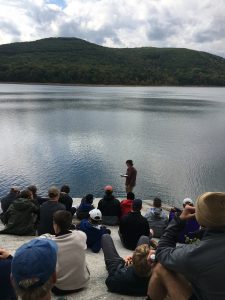
Poem #3
ON THE SUBJECT OF ANGELS & DEMONS IN MARFA, TEXAS
Sharp / how the sound of pronouncing “p” pushes the final breath of oxygen out your lungs / how in breath there is hope / Sharp / like your gaze that grazes my heart across the room with the flickering light of a sandalwood candle with wax dribbling down the brown obelisk until a pool of gold /how the flame casts a shadow on a blue wall behind a large man bent over the inner-workings of a small camera / how just like the shadow of light there always seems to be darkness right besides him / I mean us / and I am beginning to learn that is just the way of the universe / two wolves / one sinister / one love / how the one we feed breeds the creature inside of ourselves / and I do not think it is about taming the dark beast but learning how to set it free / have you ever felt lost while at home? The city-streets that run across the palm of your calloused hands have begun to feel more like a labyrinth than a schematic of memories-made and it's Friday when you have begun to think the night has drank all of the light out of the world down into its wolfin' gullet / you have nowhere to go but to yourself to reconcile the war within your chest but don’t worry, have you forgotten that you are not alone in this battle, my brother, but where art thou? / maybe to find home again we must lose it / so you seek love in the desert / maybe it was not 40 days but it was for 4 for you learn so much / I can only i m a g i n e how the gusts of air rippled the red nylon tent in the middle of the night and it was not clear if it was the wind or demons howling outside in the desert brush / maybe both / how you decided to love them instead of fighting / how they were set free by your group of 4 / and I wonder how the morning felt when the light return the canyon and illuminated a beauty so grand you had to hold each other shaking in gratitude / it reminds me how Lucifer was once an angel before the falling / did he really fall or just feed the wrong wolf? I think about how easy it is to confuse the two / I remember 4 years ago my friend Diana telling me they think heaven and hell are the different stages of morality on Earth / I am beginning to think that is true and the heaven which must have pulsed through veins after you sweated out the hell from the night before as you stared upon the morning beams of light upon the orange walls carved by centuries of stone / how just like geologic features we are manifestations of our ancestors, molded by golden dreams and past traumas alike / like when the plane sank back in the city’s atmosphere you gazed outside the frosted window to overlook the blueprint of lights that covered your pupils expanse / how you smile only to yourself knowing that you hold a secret deep within your button-down denim / a small flame that you preserved from the sand and heat compressed / knowing that you are found and full of / hope.
December 7th, 2021 / Columbus, OH
Expansion on poem #3
ON “ON THE SUBJECT OF ANGELS & DEMONS IN MARFA, TEXAS”
Entering Columbus in the spring of 2020, I gazed longingly through the frost enveloped dorm window over the night-lit city in fascinated gratitude - I was a student majoring in Environment, Economy, Development, and Sustainability at The Ohio State University. Coming from a small, liberal arts university in Cleveland, moving to the city to study to my heart’s content was a leap of faith and cemented the idea that I was now an environmentalist studying to combat climate change: I was in the big leagues. Briefly after I began integrating myself into various clubs and classes, COVID-19 surfaced and underlined fractured systems of food, justice, and consumption in America during the summer of 2020. In addition to these burdens that were heavy on my idealistic heart, in my classes I was learning about the insurmountable barriers perpetuating the climate reality. Together these existential threats brought upon a wake of depression about the future of humanity. Moreover, how do I, how do we respond to these immeasurable threats, yet stay grounded to what is happening each day and hopeful for the future, especially when I feel so morally convicted to fight this battle?
A north star to find reassurance in these complex queries came from the paper “Virtue and Happiness in Groundhog Day” by Joseph Kupfer. In this paper, Kupfer examines the process of virtuous living, or “eudaimonia” as a source of long-term happiness and fulfillment. This human flourishing is embodied in Bill Murray’s metamorphosis from egoistic hedonism, commonly seen through the character lens of Phil the reporter, who initially seeks a life of self-centered pleasure as an end rather than living for others. Kupfer writes, “We realize our human nature not only in playing the piano but also discerning the nuances of poetry or painting….The goodness in life, then, is found in activity: in the moral doing, the artistic making, the rational thinking….Because these activities are intrinsically worthwhile, moreover, they are self-sustaining; we don’t have to go beyond them for pleasure” (Kupfer, 37, emphasis added)[6]. Continuing, these sentiments translated from Kupfer carry over to the crisis of ego and identity in contemporary culture. To me, Kupfer’s notes on eudaimonia illustrate a life of meaning, pride, and fulfillment, and dissolve the notions of my identity as someone who has to save our climate and social issues. Moreover, “ON THE SUBJECT OF ANGELS AND DEMONS IN MARFA, TEXAS'' centers around the characters of light and darkness, and embodies the process of cultivating hope through virtuous living.
A second influence to this poem comes from David Loy, a Buddhist-scholar and his paper Healing Ecology, which engages a Buddhist’s lens to address our ecological crisis. Loy expresses, “lacking the security that comes from knowing our place and role in the cosmos, we have been trying to create from our own security” (Loy, 2010, p. 261)[7]. From this, Loy comments on a universal anxiety which we seek to heal through ephemeral desires such as the extreme consumption that undermines are finite natural resources, augmenting the toxic amount of greenhouse gases in the atmosphere. This theory sparked the poem’s commentary on the two wolves and two states of character of humans on Earth, and how our everyday choices contribute to both the well-being of ourselves and the planet. Moreover, my relationship with poetry intertwines with Loy’s teaching of Buddhism to "unself" - the art form helps me recognize my unity with the universe, and deepens my ability to cultivate loving kindness, sympathetic joy, compassion, and equanimity. (Loy, 2010, 256). Loy’s argument showcases the arts ability to evoke consciousness on how humans want to live in their daily life.
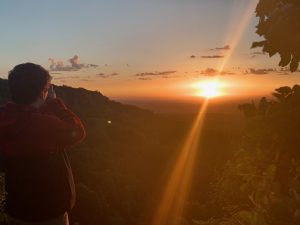
Introduction to Poem #4
TO, “I SAW THE LIGHT PEEKING THROUGH THE TREETOPS OF YOUR SMILE
& THE COLORS REMIND ME OF ALL THE REASONS TO KEEP LIVING”
For the final in the Religion and Environmental Values in America course in autumn (2022), our class was presented with the opportunity to share a piece of art in lieu of a test. On account of how much I cared about ENR3470's coursework, I wanted to encapsulate the class's spirit with a grandiose work of art. However, in the creative process of writing this finale, I felt absolutely frustrated and bottlenecked - it felt like I pushing a square peg in a round hole. These difficulties were mostly stemming from the emergent mental health issues that I had been understanding and wrestling with. Not being able to create or even do schoolwork intermittently because of my emotional swings is a very difficult reality for me to come to terms with and even more challenging for me to admit, especially when overachieving courses through my blood. However, I am learning that a consistent linear path of happiness and production is not the truth of living, of being human. We go through periods of light, dark, and really every shade in between.
Coincidentally or maybe not, I think my journey of acknowledging my mental health weaves into the class’s content. As our class learned, a control-based culture cultivates a social and economic system where the American society can impose a higher value on items or statuses than values and emotions. In a similar toxic fashion, I realized I was valuing myself by what I was able to produce for class rather than acknowledging the cosmic dance of ebbs, flows, and sometimes just needing to give the sky “the bird” I go through as a human.
To me, this class is about what happens when a group of people gather every week and think critically about the way they want to live. Together, we regain hope, build connection and empathy, and paint a vision to see a more sustainable society. Richard Baer demonstrated this outward ecological healing stems from internal healing of values. Ergo, my poem is a testimonial to healing or “unselfing,” towards navigating what it means to navigate a fractured society with failing ecosystems amidst a global pandemic, to discern what it means to be a loving, hopeful human despite the collapsed rubble of adolescent idealism and existential threats, and lastly, to learn how to listen and find “delight” in moments of grace within this common struggle.
For best interaction with the poem, I recommend this visual which you can access HERE.
Like coffee and chocolate…
Poem #4
I SAW THE LIGHT PEEKING THROUGH THE TREETOPS OF YOUR SMILE
& THE COLORS REMIND ME OF ALL THE REASONS TO KEEP LIVING
1.) DESOLATION
Let’s begin with an inhale / carry that wind through your nose / let it dive deep down into your rib cage to your stomach where it now lives / isn’t it amazing how we can be a home to ourselves though we look for it in so many other places / let your shoulders drop / follow that feeling all the way down your arms to your fingertips / see how they meet / my thumb smudges the backward glass / seeing my reflection race away in the bus’s window as it rolls down / High St / taking my smearing body away from the night and all I am left with is / mourning / how the first thing I pray to these days has been to a GOD that / takes me away from here /or gives me the will to keep fighting / but no sword appears in the murky ponds I hop over on the disheveled cement everyday nor suits of armor appear hanging in my closet / but gives me just the slightest______push to continue to roll out of Hell / I mean bed / and what does it mean when fall has no color to meet the treetops have never been a more spectacular painting of gold, auburn, and scarlet / sweeter than a fallen honey crisp apple that lands at my toes and lets me suck its life into my desperate mouth to give me just /the slightest push to continue / and isn’t that just the form of truest love / why did my prayers get answered in a little orange bottle sent by no angel / but a man who knows a whole / hour / and / a / half/ about me /and what does it mean to be someone who only sees colors in the trees when they take a little white pill every morning / I would much rather wield an intimidating blade to slice through this darkness beside me / even a little wooden slingshot would work like the one I made with my grandfather in a smoky basement smelling of sawdust / the unending bend of a smile fixed upon a white-bearded man leaning over a small dark-haired child / who / unaware /in fifteen years / his brain won’t make enough chemicals for him to / BE HAPPY / and that’s what I keep telling myself to be in the shower as my poems become mantras / my words falling out of my mouth into the steam / then I think about
II.) CONSOLATION
The light peeking through the treetops of your smile and the colors remind me of all the reasons to keep / living / I am not talking about the sunset for once / but / a hope that lingers on the edges of your lips and / the heat of flames flickering from a hearth of deep-brown in a room / they call your irises / since I mentioned sunsets / I think it’s worth sharing the day is bracketed by beauty and I have been trying to think of life that way / a gift / rolling down a bike path on / Sunday / willow trees leaning over a rushing river /smelling like the warm scent of pumpkin bread / rising from an oven / I saw my friend’s small grin creep across my / heart in the reflection of their black sunglasses / I wanted to box the moment in cardboard and send it to everyone I know / so they could see how amazing life could be / to keep rolling out of Hell / I mean bed / when we were sitting outside the library staring at a great sycamore tree / you told me / beautiful things are beautiful / but it's the experiences we have with ordinary things that create true magic / and I think they call that / love / right? / when the heart scrapes against everyday things until we mold a broken down building into a sculpture of a winged goddess called Victory / I guess that’s what this poem is all about: not winning - but manifesting reasons to stay alive / and I am not afraid of death / I am afraid of the process of dying some people call / adulthood / or a 9-5 / sometimes I see the light leaving people’s eyes on my walks to school as they look into the light on their phones / so I keep my gaze to the clouds / and I know / I know / I know /it is not all life or death /here / I know / I know / I know but I do consider this a / FIGHT / and isn’t it a great time to be a warrior / I am not thinking about sacrifice / I am thinking of all the reasons to live for / because you can endure anything for a time / because when in / desolation / consolation / is coming / but you, no, we, no, all of us /must make it through out of suffering / first/ and I again am reminded of the journey of a caterpillar / how they must struggle their way out of their chrysalis to become a butterfly / and I think back to the first breath we all took / together/ reminding us that we sail on this floating rock through space / and how beautiful is that / knowing we dance cosmically as / one.
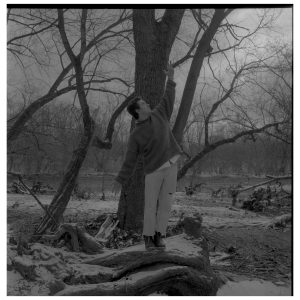
Final Note:
Dear Reader,
Thank you for making it this far with me. In the act of breaking down the facade of the stained-glass window between writer and audience, I must admit, writing this paper was arduous. The paper started with a blank whiteboard in a library at 3pm all alone. Shaking from nervousness and caffeine, I began drawing complex black webs of moments in my life and fruitlessly connecting them with class subjects. The paper continued by revisiting the whiteboard each couple of days. Standing, sitting, pacing, anything but actually writing in the room all afternoon. I remember my bike rides home as the last drops of color set over the frosty late-fall city in frustrated-gratitude. AHHH what do I even have to say? AHHH what a gift it is to be able to write on a subject like this! Like a ping-pong game against myself. Until after a month and a half, the assignment was going nowhere. I was a bit bitter, disappointed in myself, and physically tense. Luckily, with the help of Dr. Greg Hitzhusen, I realized I decided I did not want my paper to be a burdensome game. Once again, I valued my identity with my product…Oh, Liam…
The process of writing this paper reminds me of a tattoo my mentor has of three ornate arrows lining his right forearm. The pieces symbolize his three children and how at some point he must let them go to be themself. To be flung into the air with hope that they will land somewhere, sticking strong - the act seems like some sort of prayer. Now, I have never been a parent, yet this fall, it seemed like I was learning a vital lesson about parenting. After two months into the writing process, I realized I was forcing my paper-child into something it was not supposed to bloom into. In parallel to the release of my ego in the paper, I watched something beautiful happen. My words - an arrow, mid-flight - began to transform. Strict blocks of paragraphs and formal language became curving lines of poetry and delicate diction. The arrow was transforming into something much more than I ever thought it could. The wooden beams split open and unearthed a big golden bird, the dark arrowhead transformed into a deep black beak with jeweled wings. I watched as the divine creature flew out of my third-floor bedroom window and took off above my house into a blue sky, over the urban treetops and past telephone wires into the great beyond. And so, I turn to you as a collection of pictures and words soaked and stained by light and darkness, and ask you again, reader,
How shall you live today?
References
Baer, R.A. Jr. (1976). Our Need to Control: Implications for Environmental Education. The American Biology Teacher 473-476, 490.
Hitzhusen, G.E. (2007) Biblical wilderness theology: Spiritual roots for environmental education. Taproot, 17(1), 9-13.
Loy, D. (2010). Nondualist Ecology: Perspectives on the Buddhist Environmentalism of Loy. Journal of Buddhist Ethics, 17, 253-267.
- This quote from a poem Dr. Rosenthal read on the last day of class titled, "Words of advice from our authors." This poem currently hangs above my desk in Columbus. ↵
- Our Need to Control: Implications for Environmental Education by Richard Baer. ↵
- To learn more about the book, click the link HERE ↵
- The biophilia hypothesis, if substantiated, provides a powerful argument for the conservation of biological diversity. More important, it implies serious consequences for our well-being as society becomes further estranged from the natural world. Relentless environmental destruction could have a significant impact on our quality of life, not just materially but psychologically and even spiritually.[/footnote]. The ineffable feeling of purpose I felt in the Allegheny Reservoir several years ago was no coincidence. This was the first time I discovered my integral connection to nature - a bond that is etched in the chemistry of our bodies for thousands of years. Nevertheless, despite a better scientific notion of this moment, I tend to interpret this experience through the lens of a romantic. To me, this moment of clarity was a mystical, divine, or a "calling," where my heart found a pair of wings to soar. In another light, a facet of ENR3470 we explore is the concept Wilderness Spirituality - the overlapping of religion in outdoor spaces. In Dr. Greg Hitzhusen’s article, Biblical Wilderness Theology: Spiritual Roots for Environmental Education, Hitzhusen explores the concept of a Theophany: an appearance of God-a powerful manifestation of God’s presence in sensible form that makes a lasting impression on witnesses (Hitzhusen, 10)[footnote]Biblical Wilderness Theology: Spiritual Roots for Environmental Education ↵
- Biblical Wilderness Theology: Spiritual Roots for Environmental Education ↵
- Virtue and Happiness in Groundhog Day ↵
- Healing Ecology ↵
